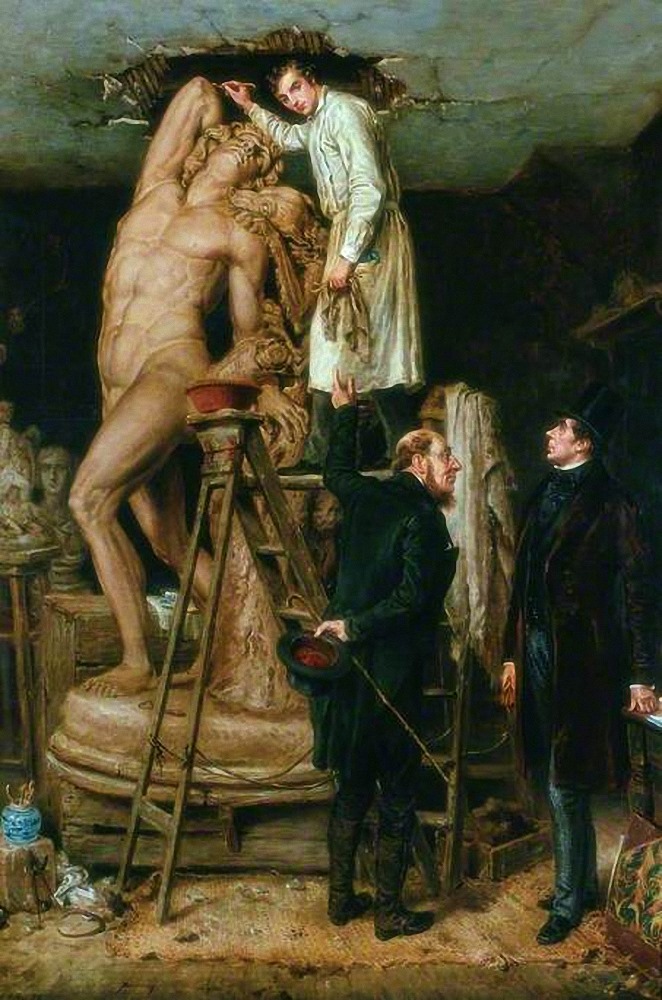
Via Ars Europa:
“In 1826, the sculptor John Graham Lough returned to London and took up residence in Burleigh Street, above a greengrocer’s shop was he started his Milo of Croton, inspired by Michelangelo’s masterpieces. Lough became obsessed with his work, living on only bread and water. Soon the piece became too big for the room, and in a fit of madness he smashed out the ceiling above. His landlord was distraught and called in Mr. Henry Brougham, an eminent lawyer of the time (later to become Lord Brougham), in order to take legal action. Unfortunately for the landlord, on seeing the artwork Mr. Brougham was spellbound and word spread quickly. Within days the house was besieged by people wanting to see this masterpiece. Almost overnight Lough became a household name. His work also impressed London society so much that he had his choice of patrons, which in turn helped establish his career.”
The story was told visually by artist Ralph Hedley, in this oil on canvas, John Graham Lough (1798–1876), in His Studio (1881), now in the Laing Art Gallery in Newcastle. I don’t know if the Milo has survived, though there are references to a later bronze version.